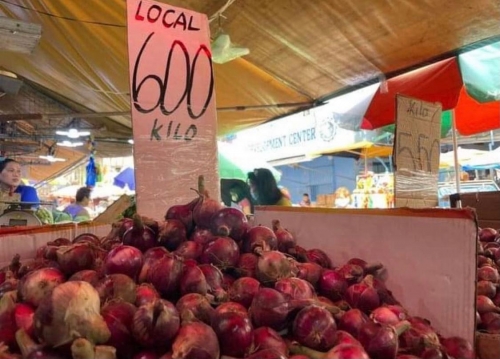Onions now cost more than meat products in the Philippines
TDT | Manama
The Daily Tribune – www.newsofbahrain.com
Reported by Julia Cassano
Although onions are a staple in Philippine cuisines and dishes, many have cut back on the use of the vegetable as the cost of onions continues to soar. Onions are a staple vegetable in many Philippine households and are often used with garlic as a base of many traditional dishes; however, the skyrocketing prices has led families to rationing the vegetable or using cheaper options of vegetables in their cooking.
Red and white onions were selling for as much as 600 Philippine pesos (4.1 BD) to 700 Philippine pesos (4.8 BD), sources report. National Public Radio (NPR) reports that locals would usually purchase around two to three kilos of onions a day; however, as the cost of onions skyrocket, many are rationing and only using half an onion.
Jane Marie, a Philippine national, told The Daily Tribune: “I have noticed prices rising up to 700 pesos per kilo in Manila, which is an absurd amount to pay for onions in the Philippines and many are now frustrated as they cannot afford to purchase onions.
“From my personal experience, this is not a normal situation, and I am noticing many people resorting to using green scallions or different kinds of vegetables in their cooking to save money. However, using scallions or other kinds of vegetables to replace onions does not give the same flavour to our traditional dishes.”
Sources are now reporting that onions have become three times as expensive as chicken and 25 percent to 50 percent more expensive than pork or beef. The Daily Tribune went out to speak to the Philippine population in Bahrain regarding the soaring prices of onions and they told us: “Most of our family members live in the Philippines, and it is already difficult for them to survive on their current salaries and cost of living.
“Our families have said that the increase of prices could have resulted from the weather and seasons, as well as hoarding during the Christmas season which is when the prices started to rise. Many of our families have asked us to bring or send onions to them as they simply cannot afford to pay the cost.”
The Bureau of Customs claims to have intercepted smuggling syndicates that have attempted to import large amounts of onions through cargo shipments that were labelled as clothing items or home products. Why has the Philippines experienced a shortage of onions? Business World reported that the onion shortage has been blamed on the failure of the Department of Agriculture to properly control supply and demand for the commodity, which has resulted in a delay in turning to imports.
The Philippine Chamber of Agriculture and Food, Inc. claimed they have failed to import the vegetable which is why there is a shortage currently. Additionally, it is usual during the festive seasons that demand increases for various products; however, this should be planned and anticipated for.
Business World reports that the shortage is estimated at about 40,000 to 50,000 metric tons, and that imports should have been placed in July and August to meet the current demand. However, the products were not imported, and this results in supply being low whilst now, the demand is high. Now, The Philippine Chamber of Agriculture and Food are expecting farmers to plant more onions because of prices, which means they can expect a large harvest by April, whilst the government must prepare for more cold storage.
Related Posts

